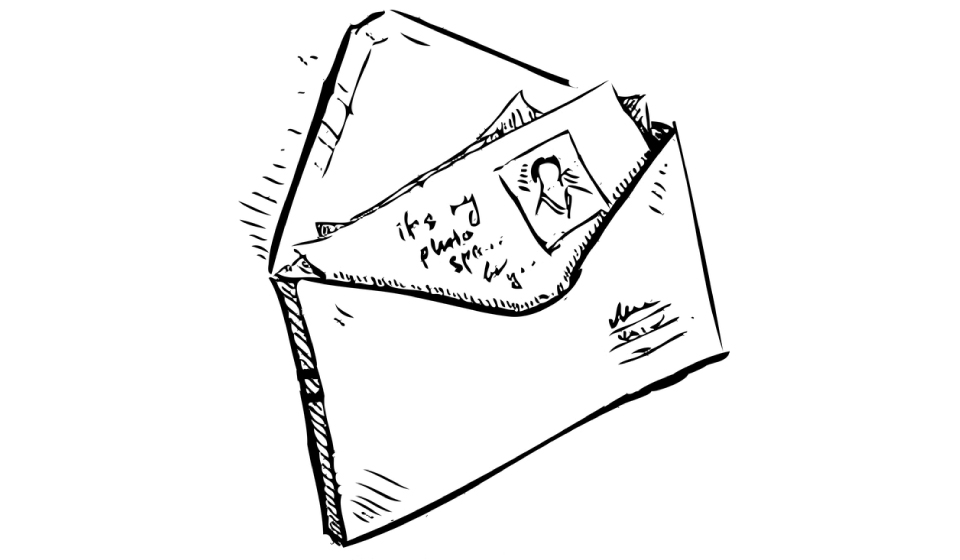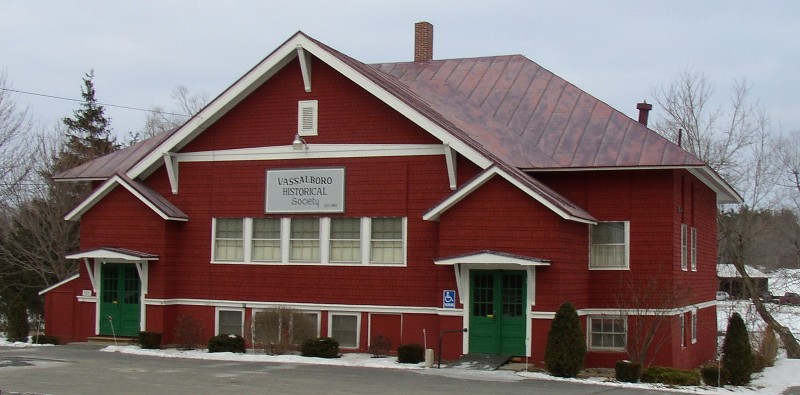Covers towns roughly within 50 miles of Augusta.
Proud to serve his country; would do it all over again
/0 Comments/in Central ME, Community/by Roberta Barnesby Roberta Barnes
It was before Veterans Day, but hearing a cashier say, thank you for your service, to the man ahead of me at the grocery store, made me smile. Since the war that resulted in forming the United States of America, people have had opinions on what would, could, should have happened if . . .
On Veterans Day we focus on the men and women who served in our Armed Forces and say thank you to them. What school you attend, what job you take, and what you do each day is your choice, even if it is a bad choice. Sometimes we forget that our way of life that allows us to make those choices is because of those men and women who served in one of the five branches of the U.S. military we know well, or the sixth branch signed into law in 2019. Military veterans, and those serving today, joined in the branch of his or her choice for various reasons, and they include varying ages, races, religions, educations, experience, and occupations.
What an U.S. Army veteran told me a few days ago sums up the attitude of military veterans regardless of rank, or the branch in the U.S. armed forces in which he or she served, “I am proud of being a Veteran.” Army Platoon Staff Sergeant Wayne Trask also added, “I would do it again,” even though he had just told me he was first shot in a fire fight in 1968.
We see movies about men being surrounded and then the cavalry comes riding in on their horses to the rescue. While military trained dogs and their military handlers are sometimes used, horses have been retired. In June 1965, the U.S. Army formed the Air Calvary, with helicopters being used in Vietnam. Staff Sergeant Trask was responsible for 50 men in a platoon in the First Air Calvary.
SSG Trask was called chainsaw because when trees were preventing a helicopter from landing where was needed, he acquired a chainsaw and cut down the trees. He gained his skill with a chainsaw as well as his excellent marksmanship with a rifle in the Maine woods.
Staff Sergeant Trask’s time in the military began with two 8-week bootcamps, plus two weeks of learning to identify weapons such as the sound of an AK47. He had been drafted, but after his two years he extended his time in the army. SSG Trask was discharged in his third year because of the severity in which he had been shot the third time. During his years in the U.S. Army, he also received shrapnel from a booby trap another soldier accidentally triggered.
Before returning to Maine, SSG Trask spent time in an Army hospital in Massachusetts, where he said he received excellent care. He was able to return to his employment at ironworks Cives Steel, in Maine, where he worked for a total of for 37 years, even though after returning from serving in Vietnam his injuries presented him with daily challenges. It was another 20 years before he received health benefits from the U.S. military.
Fifteen years after SSG Trask returned to civilian life in Maine he received for his service in Vietnam and such places as Cambodia, the silver star, the bronze star, three purple hearts, and an Army commendation metal.
I asked Staff Sergeant Trask how it felt being a young man from Maine sent to a foreign country over 8,000 miles away where his life could end at any moment. His reply was that he was there to do his job. His awareness was not just for his job, as he explained the beauty he saw in parts of the country in Vietnam. It is our job to say thank you to all our military veterans who came home and those who did not.
Often when our U.S. military veterans blend into civilian life they still help others in diverse ways. I, like many people in this country, experienced a time when I seriously needed help, and it was a U.S. military veteran who stopped what he was doing and helped me. That veteran told me a few years later that he simply did what he had been taught in the military to do when he found someone in my position.
A sincere thank you to all our U.S. military veterans who have served over the years at home and abroad.
CAMPAIGN 2024: Candidates address issues concerning Maine voters (Part 4)
/0 Comments/in Augusta, Benton, Central ME, China, Clinton, Cornville, Elections, Fairfield, Manchester, Oakland, Palermo, Politics, Sidney, Somerville, Vassalboro, Voting Guide, Waterville, Weeks Mills, Whitefield, Windsor, Winslow, Winthrop/by Website EditorLETTERS: Wayne Farrin listens to your worries
/0 Comments/in Alna, Central ME, Jefferson, Letters to the Editor, Whitefield, Wiscasset/by Website Editor To the editor:
To the editor:
Forty years ago, I moved to Wiscasset from “away,” and ever since, my husband’s been explaining to me what it means to be a real Mainer. He’s talked about honesty, resourcefulness, and independence. He’s mentioned optimism and the willingness to lend a hand. Wayne Farrin, candidate for state representative in District #47 (Alna, Jefferson, Whitefield, and Wiscasset), has these qualities. Wayne, who has worked hard since he was a little boy in South Bristol, now balances two jobs: real estate agent and co-owner, with his wife, of the Jefferson Market. In both, he meets all kinds of people. He listens to their worries and their joys. He wants to tackle problems that affect our whole community, including the lack of affordable housing and the difficulty of running a small business. Wayne is the genuine article. (My husband agrees!) Regardless of your political party, give Wayne your vote on November 5.
Anne Leslie
Wiscasset
LETTERS: Holly Stover has commitment
/0 Comments/in Central ME, Elections, Letters to the Editor/by Website Editor To the editor:
To the editor:
My wife and I have been married for over 40 years. That’s commitment (four kids, four states, 12 moves, 14 jobs between us). We’ve finally settled in South Bristol and have never been happier.
That’s one kind of commitment.
Holly Stover exemplifies another, more public sort of commitment. During her years at Health and Human Services, in Augusta, she fought to deliver basic elements of care to the people of Maine – and when I say “people of Maine” I mean ALL-OVER Maine: Fort Kent to Fryeburg, Acadia to York; and for any person, rich, poor, housed, un-housed, young, old, male/female/ungendered – and she wept when [then-governor] Paul LePage cut healthcare benefits to 70,000 Mainers.
In her “day-jobs” (and, by the way, that’s plural: jobS), she continues to work for the benefit of the Boothbay peninsula through the Director of Operations for the Community Resource Council and as the Development Director of Lincoln County Dental, helping everyday folks who need a hand-up, not a hand-out, and providing essential oral care to those who cannot otherwise afford it.
As our representative in Augusta, Holly has stood shoulder-to-shoulder with our small businesses – and in Maine, that means traditional brick and mortar, as well as marine: lobstermen and women, fishing boats of every description, the suppliers to support them, and the consumers who enjoy their harvests – she has stood with them and up for them in Augusta to help deliver critical funding for renovation and repair after the catastrophic twin storms of last January.
Holly is committed to public service. It’s why she gets up every morning. If you need her, contact her: she’ll be there for you. Let’s keep Holly Stover as our Representative for District #48, in Augusta. Vote for Holly Stover November 5.
Geoff Bates
South Bristol
LETTERS: Ray brings a wealth of experience
/0 Comments/in Central ME, Letters to the Editor, Liberty, Searsport/by Website Editor To the editor:
To the editor:
As our election draws closer, I wanted to take the time to write a letter on behalf of Mike Ray, candidate for State Representative for Appleton, Islesboro, Liberty, Lincolnville, Montville, Morrill, and Searsmont. I believe Mike will the best person to serve our communities as our District #40 representative in Augusta.
For the past several years Paige Zeigler has worked for our district as a concerned and active legislator. Often out in these communities, Paige was present for his constituents, listening and learning and then responding to our expressed needs. I am sorry that he will retire but am heartened there is someone running for this seat who will represent our communities with the same kind of commitment that Representative Zeigler has. Mike Ray has been actively running for this office with the commitment, accessibility and vigor that I had come to value so much in Paige’s service.
I believe Mike Ray will be an exemplary legislator who will work earnestly on behalf of the people he represents. He brings a wealth of valuable and varied experience to this post including years as an elected Selectman for the town of Lincolnville, membership on a variety of boards, councils, committees and commissions, both local and state, working on behalf of residents in this district, and a wide and diverse work experience, all serving to inform his ability to legislate effectively for our district. He is familiar with the state and knows the unique challenges that this district in mid-coast Maine, coastal, inland and island areas, face.
Mike has a caring heart and the patience to actively listen to the needs and desires of his community. I hope he will be elected to this post of State Representative because it will continue District #40’s strong representation in Augusta.
Cheryl Wienges
Lincolnville
LETTERS: Laura Jones is a positive go-getter
/0 Comments/in Central ME, Letters to the Editor, Politics, Sidney, Vassalboro/by Website Editor To the editor:
To the editor:
When Laura returned to her home town she returned with a mission to help. She reached out to the community and jumped in to help many of us improve our communication and technology skills. She worked to get some of the town’s meetings online, which helps many of us be able to stay informed. She spent time and her own money to get things done! When we had questions she patiently explained and then created how-to manuals. She provided flyers for community events and posted them. She is a thoughtful, positive go-getter who makes things happen.
She has volunteered, shared, supported, and encouraged many of the residents and organizations in town. Using the skills she learned in the military she has already improved the Town of Vassalboro, let’s help her to improve our state by electing Laura as our House Representative #61! She’s the best person for the job!
Janice Clowes
Vassalboro
LETTERS: Garden of Governance
/0 Comments/in Augusta, Central ME, Letters to the Editor/by Website Editor To the editor:
To the editor:
Like many folks at this time of year, I was outside recently, “putting my garden to bed” for the winter. Culling the items that I don’t want, removing the $%#! weeds, and laying in the plants and bulbs I look forward to in the spring.
And it struck me.
There’s a reason elections are held in the autumn. On November 5, we’ll have the chance to cull those representatives who throw shade, whose roots may be deep but strangle the progress of our more desirable policies; those outright weeds that grow quickly, have visually loud but unattractive flowers and want to take over the garden without supplying anything of substance.
Join me in supporting a healthy, vibrant garden of governance in Augusta, where positive policies will seek to lift-up and complement the diversity held in any thriving garden.
Vote Democratic up and down the ticket. And compost those weeds.
Geoff Bates
South Bristol
LETTERS: Caregivers need our support
/0 Comments/in Central ME, Letters to the Editor, Palermo/by Website Editor To the editor:
To the editor:
Caregivers in Maine need support now more than ever before. I hope the candidates and Maine voters will keep caregivers in mind when they cast their ballot.
There are approximately 166,000 caregivers in Maine. Chances are you or someone you know is putting in many hours of unpaid care for their loved ones. Family caregivers are balancing a lot and over 60 percent of family caregivers work either full or part-time. I was a caregiver for my father for six years and I know how hard that can be.
Caregivers are tough! They do one of the most important jobs there is. It’s time they receive the support they deserve. Let’s ask the candidates important questions this election season such as how they plan to help family caregivers in Maine. It’s time for us to know.
Paul Armstrong
AARP Maine
Lead Volunteer Advocate
Palermo
Central Maine historical societies gather
/0 Comments/in Central ME, China, Community, Kennebec County, Local History, Vassalboro/by Eric W. Austin
Vassalboro Historical Society
by Eric W. Austin
On Saturday, October 26, representatives from historical societies across Central Maine met at the Vassalboro Historical Society, united by a shared goal: to preserve and celebrate Maine’s rich history. About two dozen history enthusiasts and society members gathered to share updates, discuss challenges, and brainstorm solutions to common issues.
Each society had a unique story to tell, with updates ranging from the restoration of historic buildings to engaging community programs. For example, the China Historical Society spoke about their recent presentation on the town’s almost forgotten narrow gauge railway system.
Despite the successes, the societies also discussed a variety of shared challenges, such as the need to grow their membership, the constant problem of limited funds, not enough volunteer support, and the often-daunting task of digitizing historic records.
“We’re constantly juggling the need to catalog items and preserve them while also making history accessible to the community,” said one attendee, a sentiment that was echoed by others.
Many societies expressed hope in drawing younger members to the cause, with some already seeing promising signs of interest from new generations. The Vassalboro Historical Society even mentioned their new TikTok channel, where short, engaging clips are helping to spark interest among younger audiences.
Each historical society had a wish list that included more storage space, financial support, or equipment like climate-controlled rooms and scanners. As one attendee put it, “We may be small, but we’re doing everything we can to preserve our local history for future generations.”
Residents interested in history and community service are encouraged to get involved with their nearest historical society. Whether you have time, expertise, or just a love for the past, there’s a way for you to contribute!
Interesting links
Here are some interesting links for you! Enjoy your stay :)Site Map
- Issue for March 27, 2025
- Issue for March 20, 2025
- Issue for March 13, 2025
- Issue for March 6, 2025
- Issue for February 27, 2025
- Issue for February 20, 2025
- Issue for February 13, 2025
- Issue for February 6, 2025
- Issue for January 30, 2025
- Issue for January 23, 2025
- Issue for January 16, 2025
- Issue for January 9, 2025
- Issue for January 2, 2025
- Issue for December 19, 2024
- Issue for December 12, 2024
- Issue for December 5, 2024
- Issue for November 28, 2024
- Issue for November 21, 2024
- Issue for November 14, 2024
- Issue for November 7, 2024
- Issue for October 31, 2024
- Issue for October 24, 2024
- Issue for October 17, 2024
- Issue for October 10, 2024
- Issue for October 3, 2024
- Issue for September 26, 2024
- Issue for September 19, 2024
- Issue for September 12, 2024
- Issue for September 5, 2024
- Sections
- Our Town’s Services
- Classifieds
- About Us
- Original Columnists
- Community Commentary
- The Best View
- Eric’s Tech Talk
- The Frugal Mainer
- Garden Works
- Give Us Your Best Shot!
- Growing Your Business
- INside the OUTside
- I’m Just Curious
- Maine Memories
- Mary Grow’s community reporting
- Messing About in the Maine Woods
- The Money Minute
- Pages in Time
- Review Potpourri
- Scores & Outdoors
- Small Space Gardening
- Student Writers’ Program
- Solon & Beyond
- Tim’s Tunes
- Veterans Corner
- Donate



